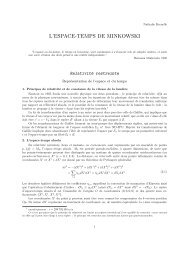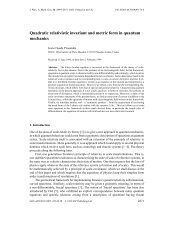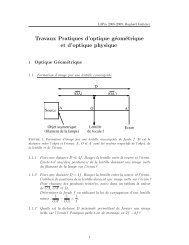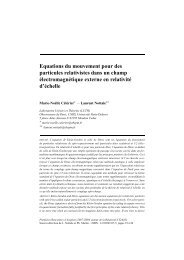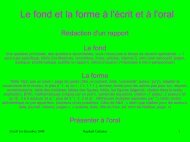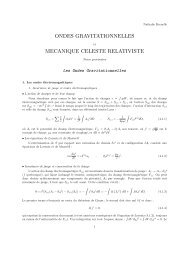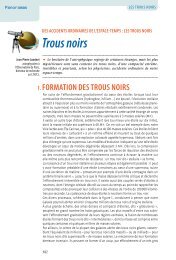Equation of state for compact stars Lecture 1 - LUTh
Equation of state for compact stars Lecture 1 - LUTh
Equation of state for compact stars Lecture 1 - LUTh
You also want an ePaper? Increase the reach of your titles
YUMPU automatically turns print PDFs into web optimized ePapers that Google loves.
unit cell = ion sphere<br />
Determining the ground <strong>state</strong> <strong>of</strong> inner crust<br />
Once the Hartree-Fock orbitals ϕ (n)<br />
β and ϕ (p)<br />
α are determined, one finds the<br />
minimum (ground <strong>state</strong>) value <strong>of</strong> Ecell(N, Z), filling the lowest N neutron and Z<br />
proton <strong>state</strong>s. Then, the absolute ground <strong>state</strong> configuration is found by<br />
minimizing Ecell(N, Z) at a fixed A = N + Z.<br />
Let us notice, that αZ and βN correspond to “Fermi levels” <strong>for</strong> protons and<br />
neutrons, respectively. In terms <strong>of</strong> the single-nucleon orbitals, the neutron drip<br />
point corresponds to the threshold density at which the neutron Fermi level<br />
becomes unbound, i.e., ϕ (n)<br />
extends over the entire unit cell.<br />
βN<br />
Remark: In reality an unbound ϕ (n)<br />
β extends over all volume <strong>of</strong> the crystal V , and<br />
not only over Vc. Moreover, in an infinite crystal ϕ (n)<br />
β should fulfill the same<br />
symmetry (periodicity) conditions as the crystal lattice itself.<br />
Pawe̷l Haensel (CAMK) EOS <strong>for</strong> <strong>compact</strong> <strong>stars</strong> <strong>Lecture</strong> 1, IHP Paris, France 40 / 54





